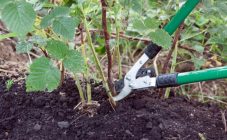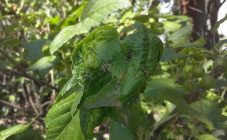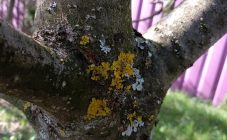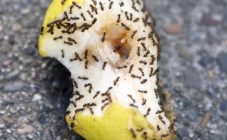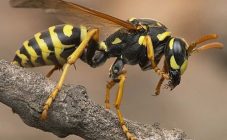Content:
Cherry is one of the most popular plants in Russian gardens. It is valued for its tasty and healthy fruits, from which jams, juices, compotes and other culinary delights are prepared.
Most often, cherries grow in our plots in the form of shrubs up to 2-2.5 meters in height. However, there are also taller plants - over 3 meters high. Cherry is not a very cold-resistant plant. Many varieties do not withstand frosts below -25-30 degrees. However, for Siberia and other cold regions, more winter-hardy varieties were bred, which copes well with harsh winters and at the same time give very good yields.
There are a lot of cherry varieties. They are both self-fertile (not requiring other varieties on the site) and self-fertile (in this case, several different varieties must be grown on the site).
Many gardeners strive to plant a cherry orchard so that these plants delight with their fruits from the very beginning of summer until autumn. To do this, you need to plant early varieties (Shpanka, Molodezhnaya, Vasilievskaya), medium-ripening varieties (Vladimirskaya, Zhukovskaya, Kharitonovskaya), as well as late varieties (Lyubskaya, Schedraia, Rubinovaya). In the northern regions, it is better to plant Ob, Altai swallow, Ural ruby, they all perfectly withstand severe frosts. But in Moscow and the Moscow region, Turgenevka and Griot Moskovsky have proven themselves well.
Cherry aphid
There are several varieties of aphids in gardens. Unlike caterpillars and other similar pests, it does not eat leaves and fruits, but huge hordes of this pest can destroy an entire garden if the necessary measures are not taken in time.
Cherry aphid (also called black) is common on cherry trees and shrubs. In a very small amount of time, this pest is capable of attacking a cherry orchard. Aphids lay eggs in the bark, where they hibernate. With the onset of heat, the eggs turn into insects, which climb onto young cherry shoots in search of food.
Aphids on cherries: how to get rid
A huge number of drugs are available to the modern gardener to help destroy this malicious pest. But it should be noted that at the moment when fruits are already hanging on a tree or shrub, it is impossible to treat the plants with chemicals. It is better to do such treatments before flowering, but you should not be limited only to them.
Trapping belts help well in the fight against cherry aphids. Aphids are often brought to trees and shrubs by ants. She sucks the juice from the leaves, and the ants, in turn, drink milk from the aphids. In the fight against ants and other crawling insects, trapping belts will help. They are installed in early spring, when many pests are still asleep and inactive. In this case, the trapping belts need to be renewed from time to time, since their sticky layer is gradually erased. Trapping belts are attached at the bottom of a tree or shrub (before the first branch). As a result, correctly installed trapping belts will not allow a single insect to pass onto the tree branches, they will all get stuck and die in the sticky belt.
In addition, in early spring it is worth going around the site and finding all the anthills on it. Ants on cherries are very dangerous, they often "breed" aphids. Most often they build their nests next to paths, curbs, flower beds.
How to get rid of ants on cherries: it is recommended to sprinkle ants' nests with special preparations that will scare away these insects - Ant, Anteater, Thunder 2 and others. A few days after treatment, the ants will disappear and will not cause trouble for a long time.
If there are aphids on the cherry, it can be destroyed with chemicals; when using them, you must strictly follow the instructions. Most often, the universal Spark is used to destroy aphids. It contains substances that are deadly to aphids, as well as potassium, which will help restore strength to a weakened plant. Fitoverm is also gaining popularity. This is a natural biological preparation, the main advantage is that it quickly decomposes, kills pests, and fruits and berries can be harvested two days after processing. However, it also has disadvantages - several sachets of this drug will be needed for one adult tree and the plants will have to be sprayed several times with a frequency of 10-15 days.
The selected aphid control agent must be diluted according to the instructions. It is best to spray on a cloudy day or in the evening after sunset.
They are processed not only on top of the leaves, but also on the back. This is where most of the pests hide. It is also recommended to process the stems, branches, soil under the plants.
There are also folk eco-friendly methods to combat cherry aphids:
- laundry soap. In 10 liters of water, you need to dilute half a bar of laundry soap.
- wood ash (500 grams per 10 liters of water), but the solution must be infused for three days.
- infusion of tops of tomatoes, potatoes, tobacco leaves or herbs.
Do not forget about prevention. Regularly in the cherry orchard, you need to prune damaged branches, weed out weeds. It is necessary to get rid of fallen leaves in a timely manner, treat plants for fungal diseases, whitewash trees and shrubs in autumn and spring.
What other pests exist in cherries: characteristics and methods of control
In addition to aphids, cherry orchards attract a large number of other dangerous pests. The cherry weevil is capable of destroying not only the leaves, but even the buds. This pest does not refuse fruits either. The weevil damages them, and then lays eggs there, which hibernate in fallen berries until the next season. Another terrible pest of cherries is the slimy sawfly. It eats up the juicy part of the leaf. The slimy sawfly causes irreparable harm to cherry trees and shrubs. After such an invasion, the plants weaken, they shed their foliage early. All this leads to the fact that in harsh winters, cherries can freeze out. But already ripe cherries can be destroyed by a cherry fly. She lays larvae in the berries, which feed on the fruits, spoil them and, of course, do not allow them to pour.
You can spray cherry orchards from all these pests with the above chemicals or folk remedies. However, no treatment will give the desired effect without preventive measures.
- It is imperative to remove diseased and dried branches (this should be done in spring and autumn, as they often contain pests).
- It is necessary to cover all cracks in trees and shrubs, cuts. For this, a garden pitch is used.
- All fallen leaves must be collected and preferably burned. You can bury them, but not next to the cherry plantings, but farther away.
- Damaged fruits are also harvested and destroyed; they cannot be left on the tree or under it.
- It is worth treating the garden in late autumn with a 5% urea solution.
Also, the cherry orchard needs spring feeding (you can scatter urea over a crust of ice), and in August you need to give trees and shrubs superphosphate and potash fertilizers. All this will help strengthen the plants, protecting them from diseases and pests.



